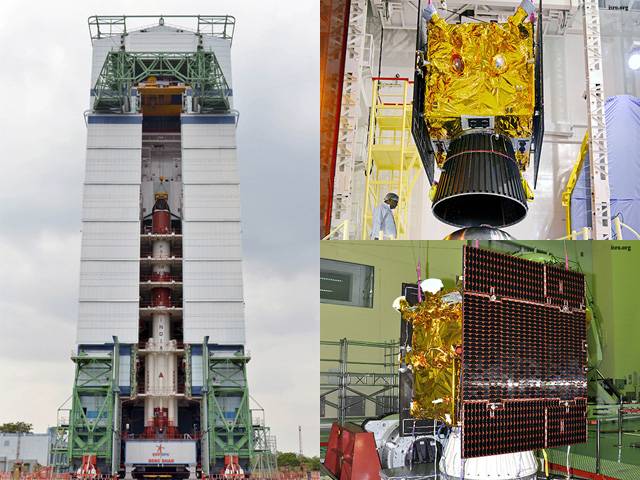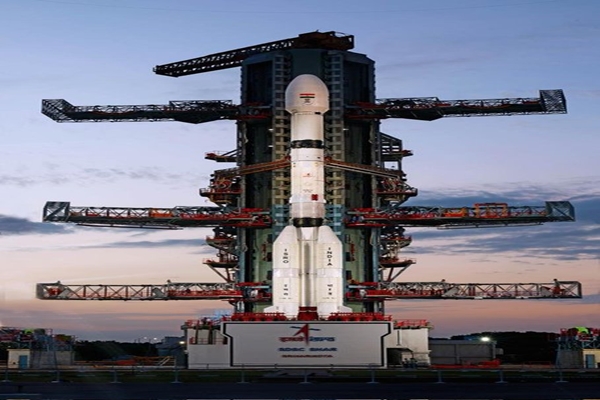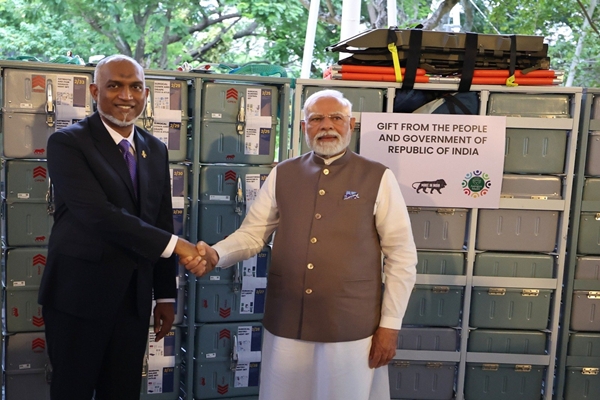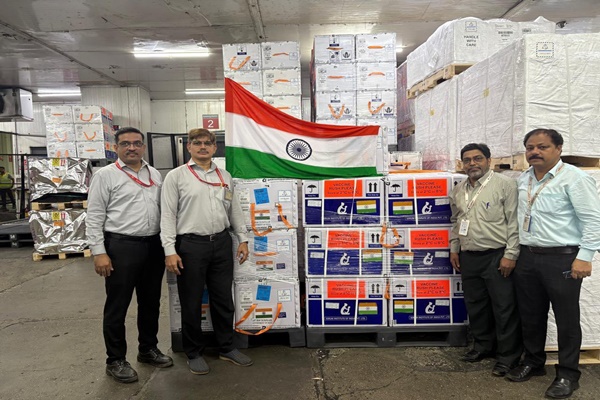ISRO launches ASTROSAT, first space observatory
Mon 28 Sep 2015, 11:31:04

Sriharikota (A.P): The Mars Orbiter, the Indian Space Research Organisation (ISRO) on Monday launched its first dedicated multi wavelength space observatory into space, besides six satellites for Canada, Indonesia and the United States.
Though the national space agency has launched satellites for Indonesia and Canada earlier, this is the first time ISRO is launching satellites for the United States.
Though there have been scientific missions in the past by ISRO - Aryabhata, SROSS, Youthsat, IRS-P3, GSAT-2, Chandrayaan-1 and Mars Orbiter Mission, this is the first time ISRO is launching a space observatory into space. Though ASTROSAT may be similar to the NASA's Hubble Space Telescope, the former is about 10 times smaller and cannot be compared to the Hubble, which is versatile.
Besides NASA, space agencies of the European Union, Japan and Russia have launched similar facilities into the space.
Within 22 minutes after it lifted off from the Satish Dhawan Space Centre here at 10 am, ISRO's PSLV C-30 rocket successfully placed in orbit - the country's AstroSat. Within few minutes later, Canada's NLS-14 nanosatellite, Indonesia's LAPAN-A2 microsatellite and four identical LEMUR nano satellites for the United States were also put in orbit.
With the Monday's launch, ISRO has successfully crossed the half century mark as for foreign satellites. ISRO has launched 51 satellites for foreign satellites so far.
“Today is one of the eventful days for us. Our PSLV has once again proved to be a workhorse,” ISRO chairman A.S. Kiran
Kumar said from the Mission Control Room, soon after the rocket injected the satellites into the intended orbits.
The 1,513 kg-weighing cuboid-shaped satellite would be eventually fine-tuned into 650 km above the Earth’s surface. The satellite can perform simultaneous multi-wavelength observations of various astronomical objects. The sun and star sensors, besides the gyroscopes, would provide orientation reference to the satellite, which has a mission life of five years.
ASTROSAT aims at understanding the high energy processes in binary star systems containing neutron stars and black holes, to estimate magnetic fields of neutron stars, to study star birth regions and high energy processes in star systems lying beyond the Milky way galaxy.
The mission also intends to detect new briefly bright X-ray sources in the sky, to perform a limited deep field survey of the Universe in the ultraviolet region.
A team headed by Prof. U.R. Rao finalised the five payloads, which were taken onboard the ASTROSAT – Ultraviolet Imaging Telescope, Large Area X-Ray Proportional Counter, Soft X-ray Telescope and Cadmium Zinc Telluride Imager.
While Canada’s NLS-14 is a maritime monitoring nanosatellite using the Automatic Identification System, Indonesia’s LAPAN-A2 is aimed at benefitting Indonesian radio amateur communities for disaster mitigation and carrying out Earth surveillance. All the four identical LEMUR satellites for the United States - non-visual remote sensing satellites aims to focus on global maritime intelligence through vessel tracking.
No Comments For This Post, Be first to write a Comment.
Most viewed from Specials
Most viewed from World
AIMIM News
Latest Urdu News
Most Viewed
May 26, 2020
Can Lionel Messi's visit boost Indian football?
Latest Videos View All
Like Us
Home
About Us
Advertise With Us
All Polls
Epaper Archives
Privacy Policy
Contact Us
Download Etemaad App
© 2026 Etemaad Daily News, All Rights Reserved.























.jpg)













.jpg)
.jpg)
.jpg)


